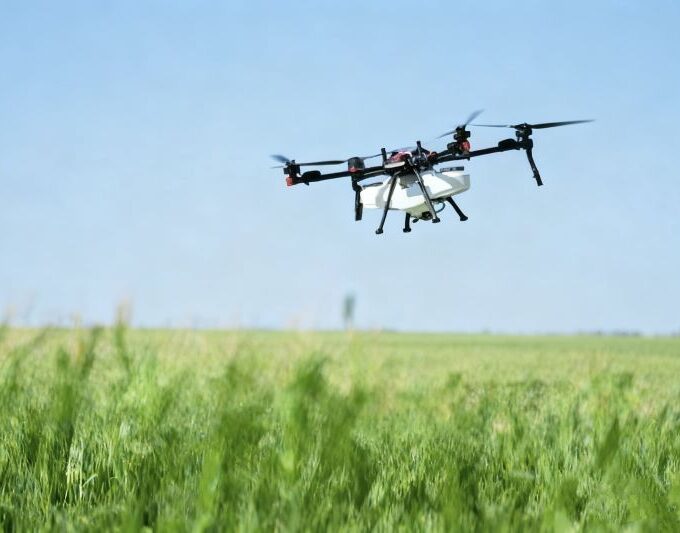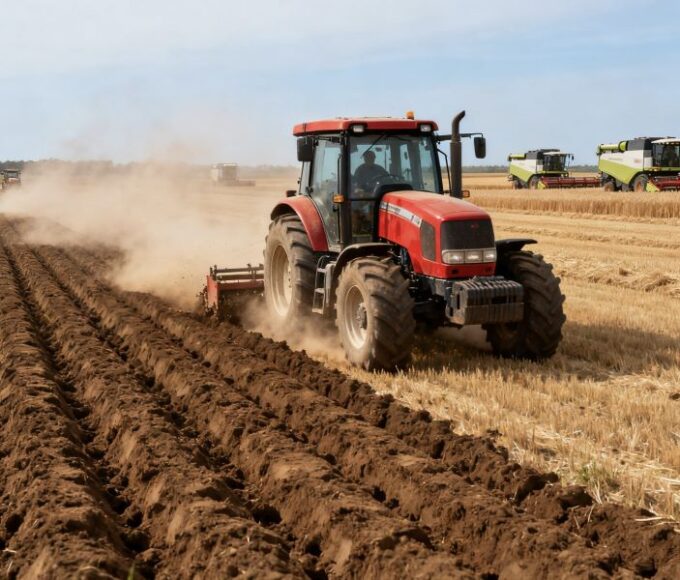In the face of pressing global challenges, such as resource depletion, environmental degradation, and climate change, regenerative agriculture has emerged as a dynamic and innovative model, offering a promising path for the sustainable future of agriculture. It breaks away from traditional yield-driven practices and places ecosystem restoration and renewal at its core, aiming to establish a virtuous cycle where food security, ecological integrity, and economic viability can coexist and mutually reinforce each other.
Core Concepts of Regenerative Agriculture
Soil is the bedrock of agricultural productivity, and regenerative agriculture places great emphasis on restoring soil health. Healthy soil acts as a living ecosystem, rich in organic matter, diverse microorganisms, and essential minerals, providing robust support for plant growth. In New South Wales, Australia, some farms have combined cover cropping and organic composting over decades, successfully increasing soil organic matter content from 1.2% to 3.5%. This improvement enhanced the soil’s water retention, nutrient storage capacity, and aggregate structure, allowing deeper development and leading to more resilient crops. For those interested in deeper scientific explanations, Wikipedia’s page on regenerative agriculture provides a comprehensive and professional breakdown of soil regeneration principles and mechanisms.
Biodiversity is another vital goal of regenerative agriculture. A biologically diverse agricultural ecosystem can maintain natural checks and balances, significantly improving resilience against pests and diseases. In the American Midwest, many farmers are moving away from single-crop systems, instead planting diverse native grasses and wildflowers along field edges. These plants provide critical food sources for pollinators like bees and butterflies, and attract pest-eating birds and small mammals. For instance, on a corn farm in Iowa, the introduction of diverse vegetation reduced the local pest population by about 40%, greatly decreasing the need for chemical pesticides. Meanwhile, soil microbial activity improved, strengthening soil fertility and promoting the formation of a stable, self-sustaining ecosystem.
Regenerative agriculture is not limited to soil and biodiversity; it also focuses on water cycle restoration, enhancing ecosystem services, promoting carbon sequestration, strengthening climate resilience, and revitalizing soil vitality. For water cycles, appropriate field infrastructure and vegetation cover can minimize surface runoff, increase water infiltration, and optimize water use efficiency. In carbon sequestration, plants absorb CO₂through photosynthesis and store it as organic matter within the soil, contributing significantly to climate change mitigation. All these ecological functions are interconnected, working synergistically to build a resilient and sustainable agricultural system that can withstand environmental stresses.
Practical Applications of Regenerative Agriculture
On small farms and gardens, regenerative agriculture draws from a wide range of advanced agricultural philosophies. Permaculture models farming after natural ecosystems, promoting self-sufficiency and cyclical resource use. Agroecology emphasizes farming in harmony with natural processes. Agroforestry combines forestry with agriculture, making efficient use of land resources. Ecological restoration focuses on repairing degraded ecosystems. Keyline design optimizes farm layouts for water conservation and soil regeneration. Holistic management considers farm operations as interconnected systems. In parts of Europe, small organic farms using agroforestry techniques intercrop fruit trees with vegetables and herbs. Fruit trees provide shade and organic mulch, enriching the soil, while low-growing crops suppress weeds, reducing herbicide reliance. These systems maximize ecological synergy and generate both ecological and economic benefits.
For large-scale farms, “no-till” or “reduced-till” techniques are key practices. Traditional tillage, while loosening soil, disrupts its natural structure, accelerates organic matter decomposition, increases water loss, and causes erosion. No-till seeders allow planting without disturbing the soil, preserving its biological communities and structural integrity. In the U.S. The Great Plains, adopting no-till methods, has reduced soil erosion by about 60%, improved water retention, and enhanced drought resilience. Large farms also focus on recycling agricultural waste, transforming livestock manure and crop residues into compost that enriches the soil organically, reducing dependency on synthetic fertilizers.

Significant Benefits of Regenerative Agriculture
Economic Benefits: Economically, regenerative agriculture offers substantial advantages. As soil health improves, the need for external inputs like fertilizers and pesticides declines. In Brazil, coffee plantations employing regenerative practices saw a 20–30% yield increase over 5–8 years, while cutting input costs by 15–20%. Moreover, regenerative products—often organic, higher in nutritional value, and environmentally friendly—command premium prices in the market, providing farmers with additional income streams. This combination of cost reduction and higher market value underpins the strong economic sustainability of regenerative farming systems.
Environmental Benefits: Regenerative agriculture plays an irreplaceable role in environmental protection. Through biological carbon sequestration, widespread adoption of regenerative practices could fix hundreds of millions of tons of atmospheric CO₂annually, offering a powerful tool in combating global warming. Reduced pesticide and fertilizer use also minimizes agricultural runoff, helping to protect aquatic ecosystems. Studies show that farms adopting regenerative methods have significantly lower levels of nitrogen and phosphorus in surrounding water bodies, dramatically reducing risks of eutrophication and protecting aquatic biodiversity.
Current Status and Future Outlook
Since the concept of regenerative agriculture first gained attention in the early 1980s, its development has accelerated rapidly. Organizations such as Kiss the Ground have significantly raised public awareness through documentaries, educational programs, and policy advocacy initiatives, emphasizing the vital role of healthy soils and regenerative practices. Australia’s Mulloon Institute has become a global leader in applied regenerative practices, notably restoring ecosystems through projects like the Mulloon Creek Restoration Initiative.
Despite its promising outlook, regenerative agriculture faces several challenges. The lack of a universally accepted definition or standardized practices can create confusion, complicating large-scale adoption. Moreover, the higher upfront costs during the initial transition phase can deter some farmers from making the shift. However, ongoing research, growing field experience, and government incentives are helping address these barriers. As global awareness of sustainable development deepens and the urgency of environmental protection grows, regenerative agriculture is expected to expand dramatically worldwide. It holds immense potential to secure global food supplies, restore ecological balance, mitigate climate change, and lead agriculture toward a greener, more sustainable future.












